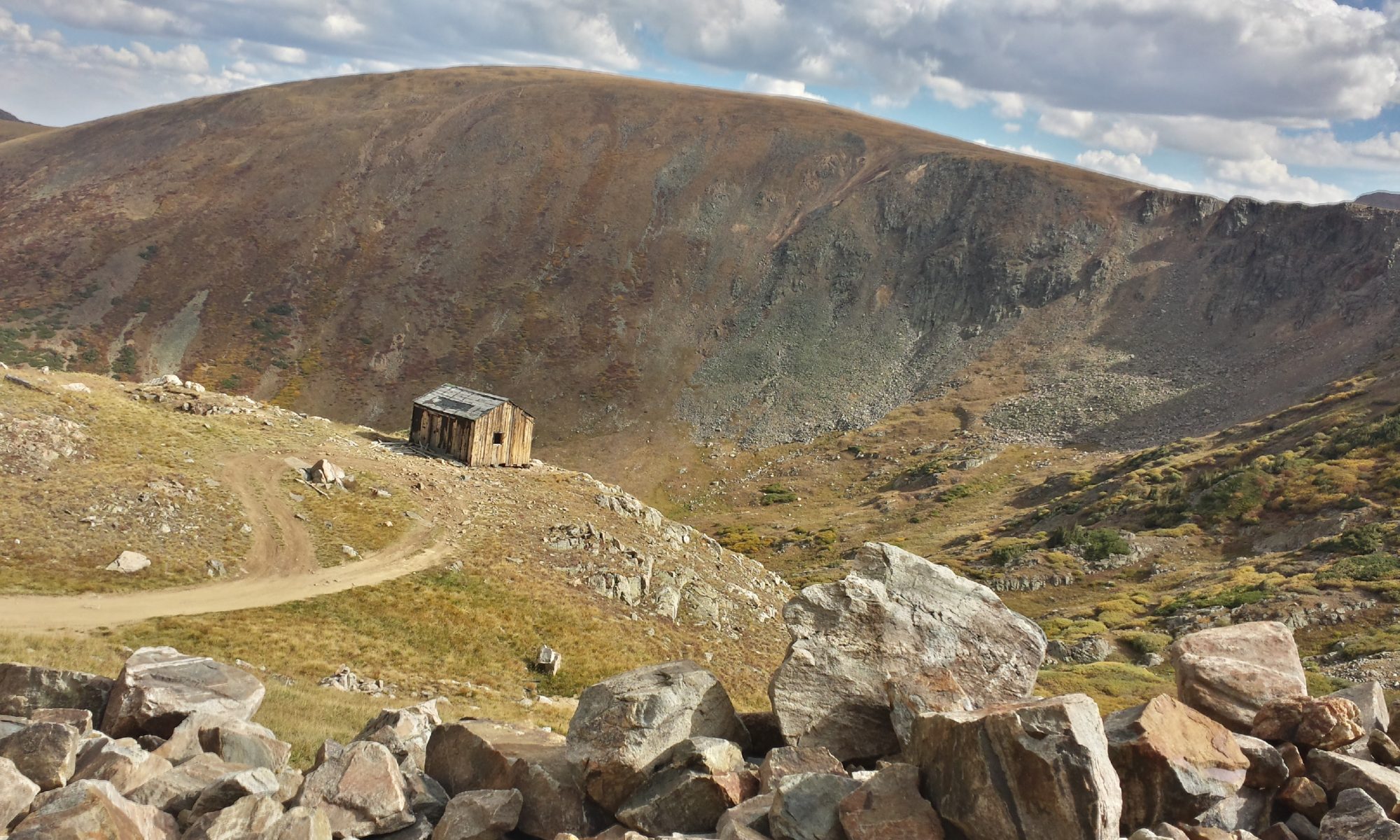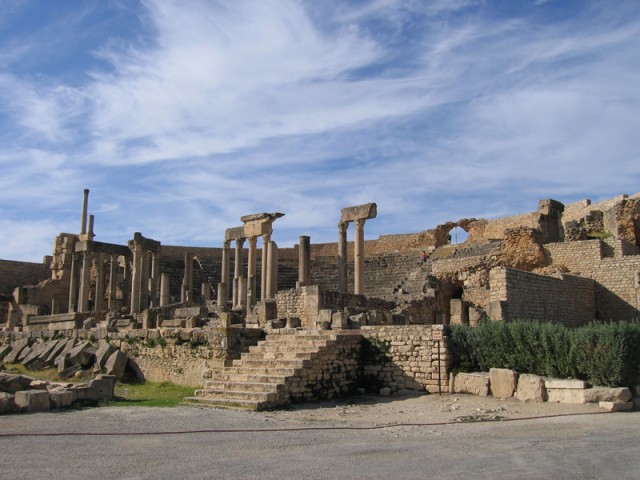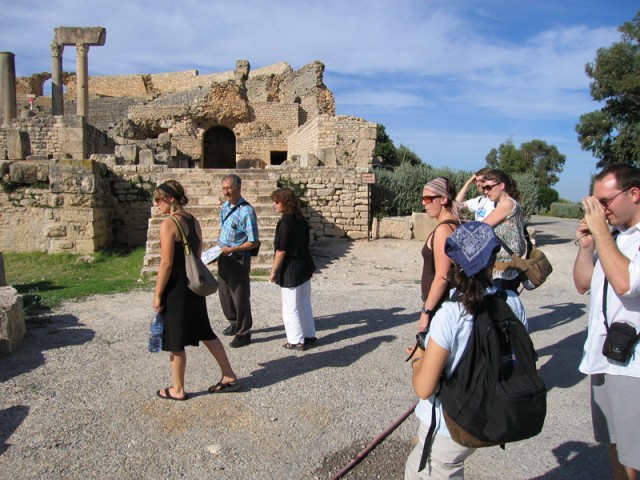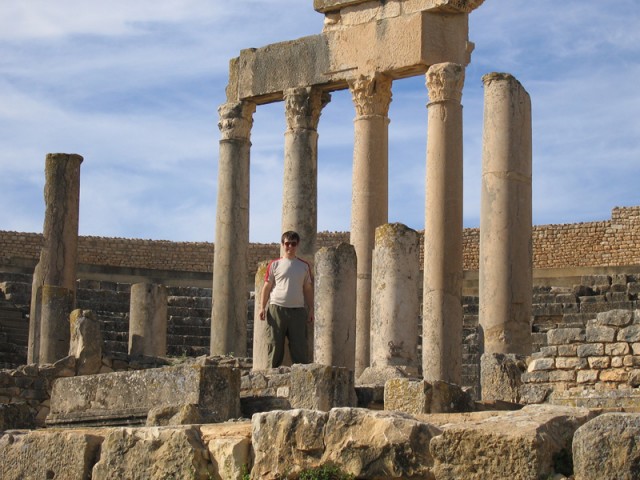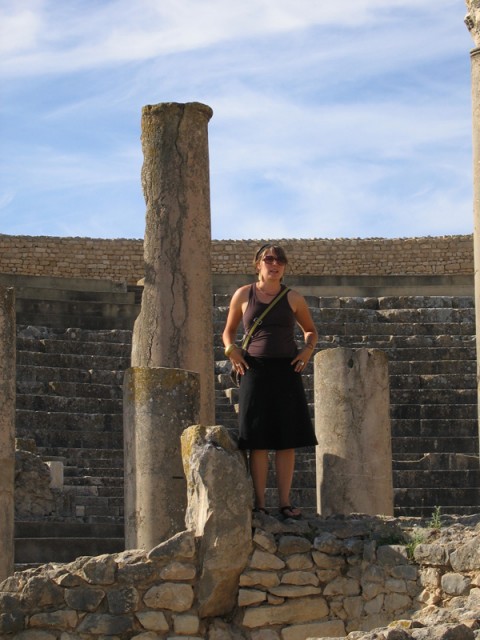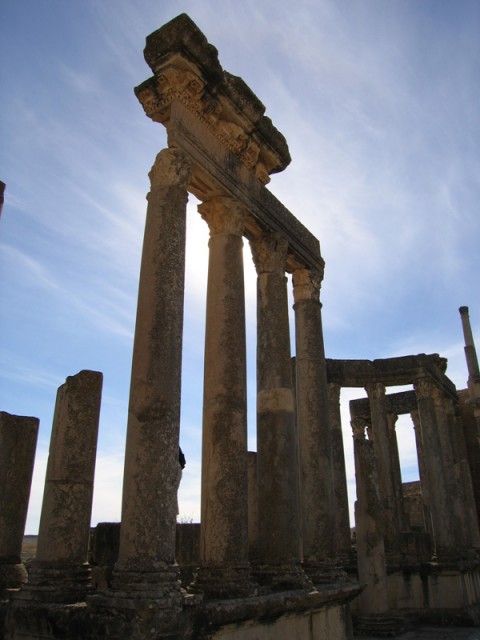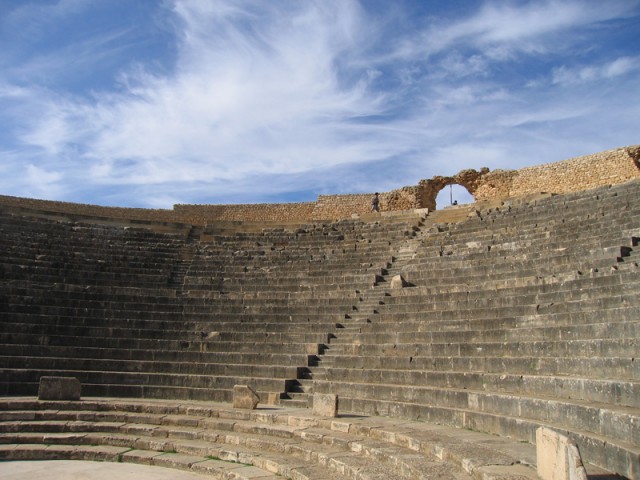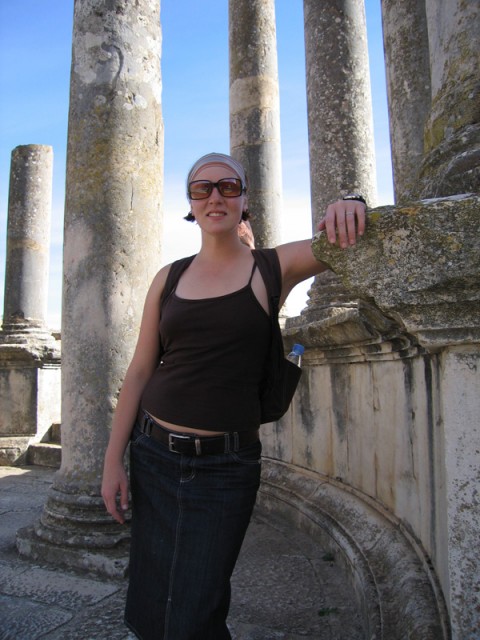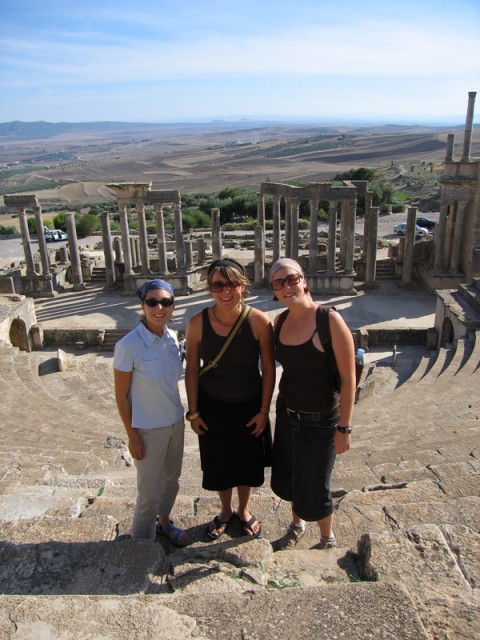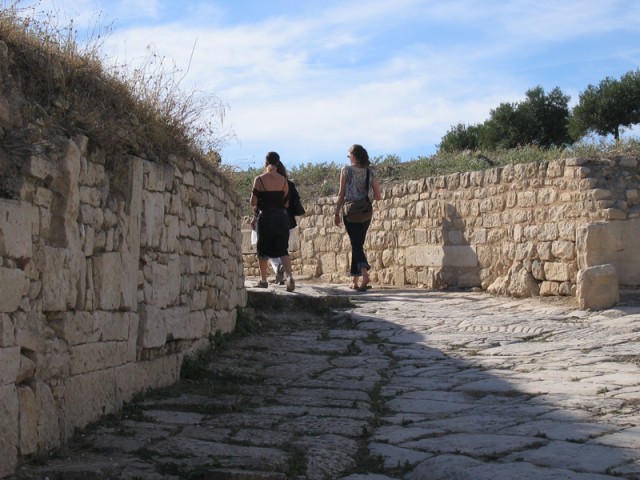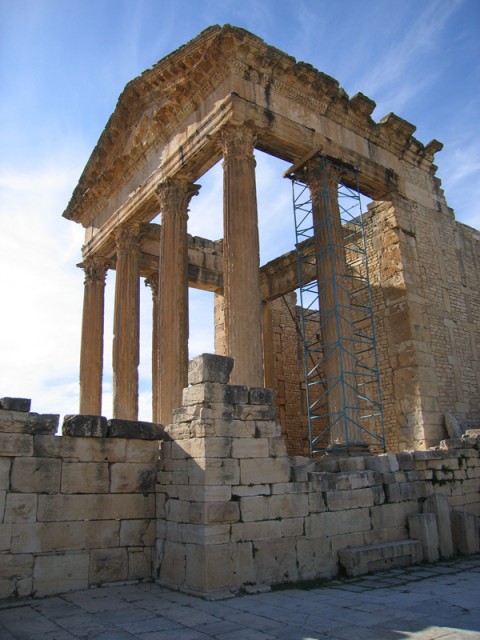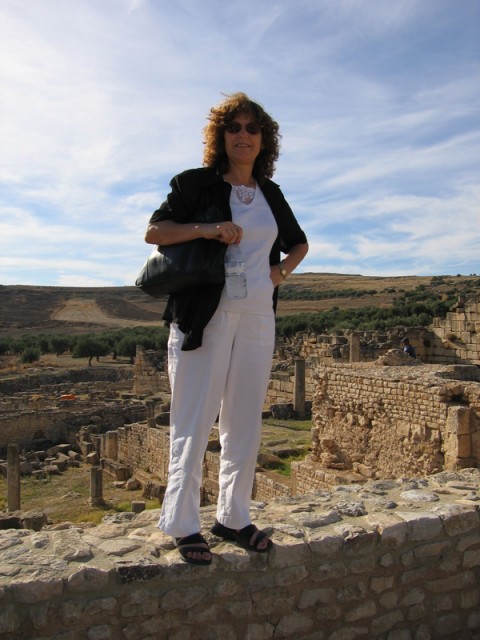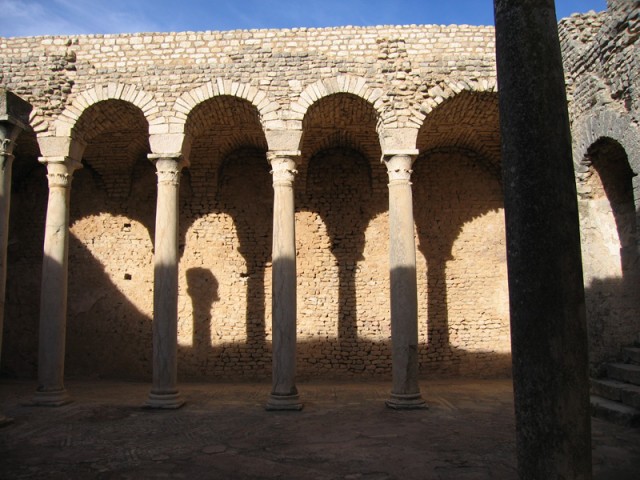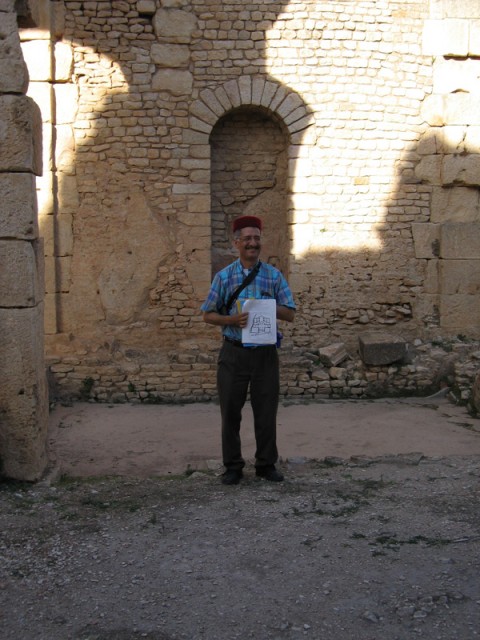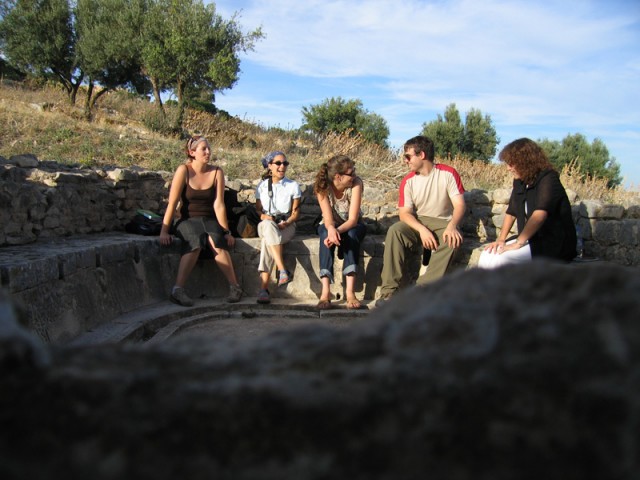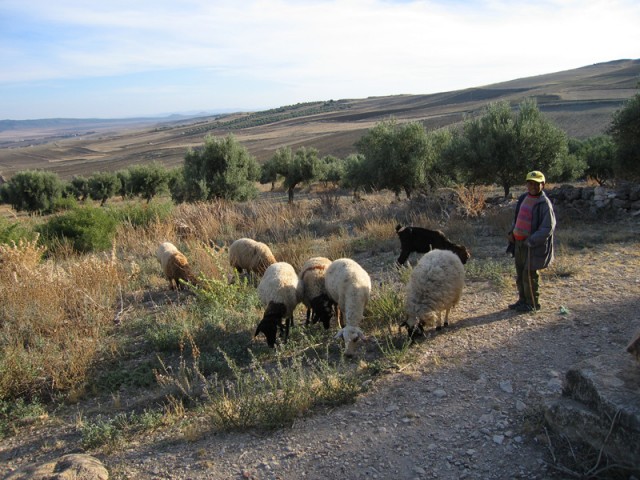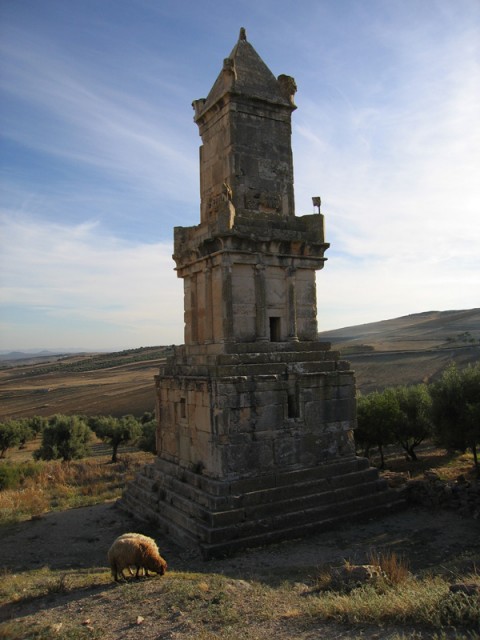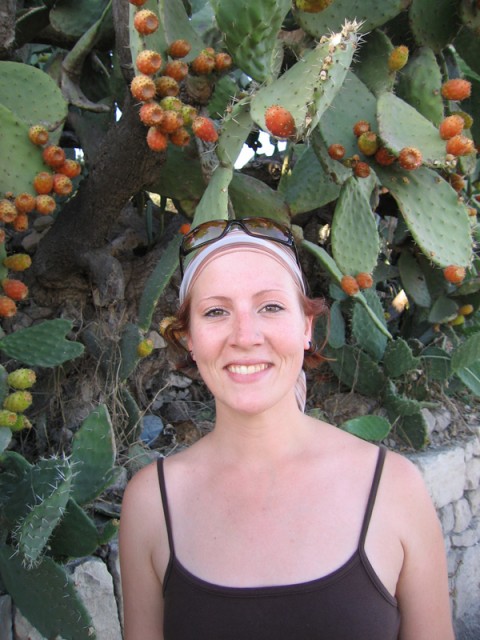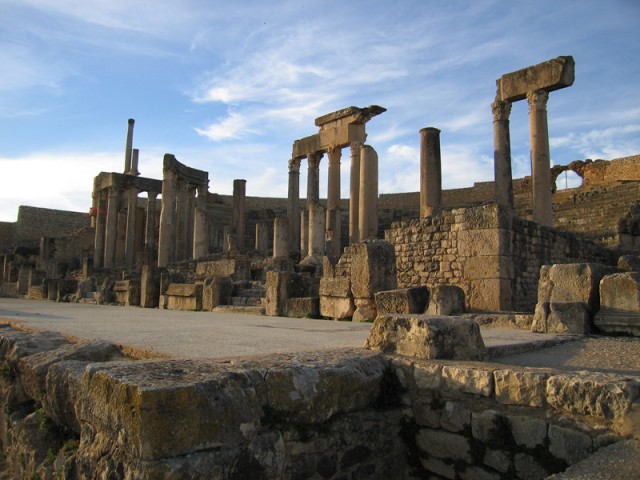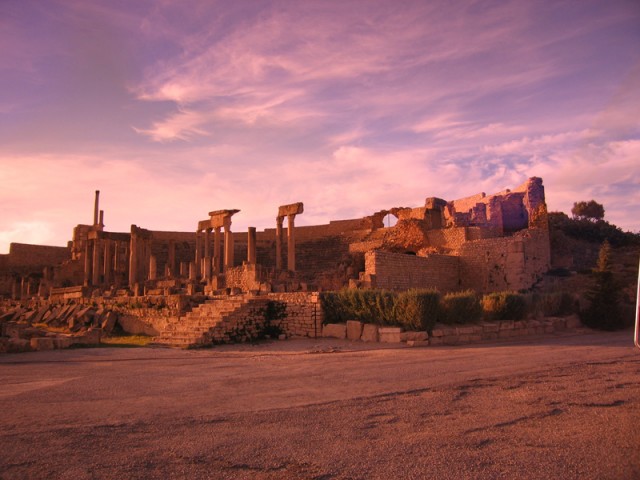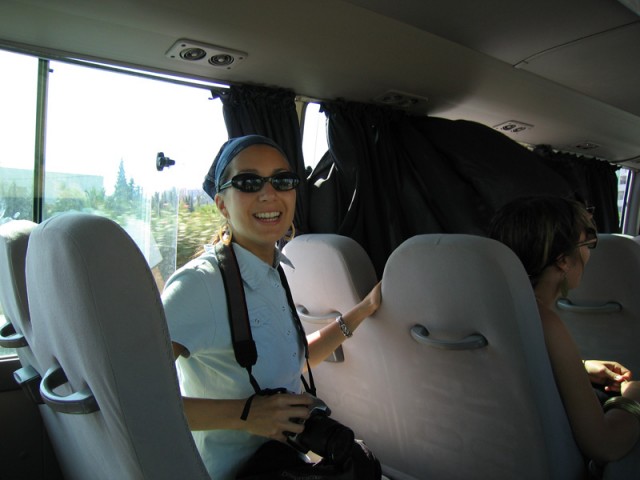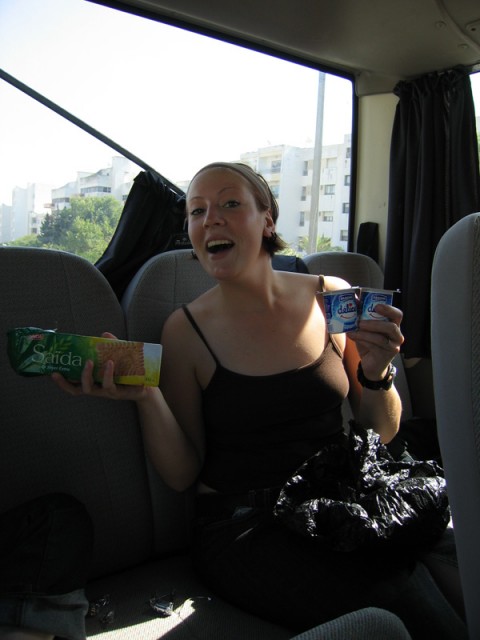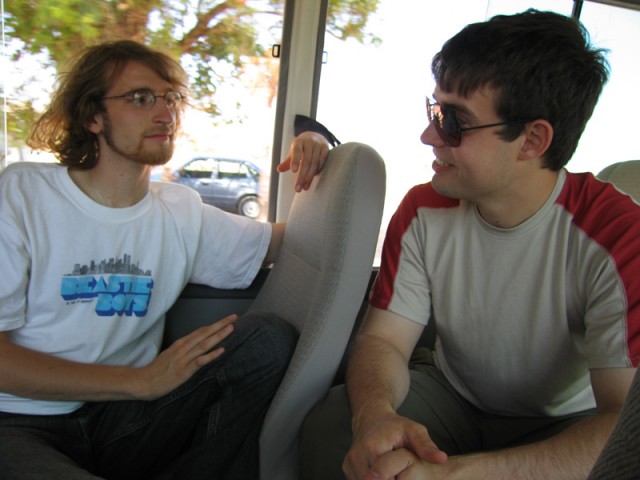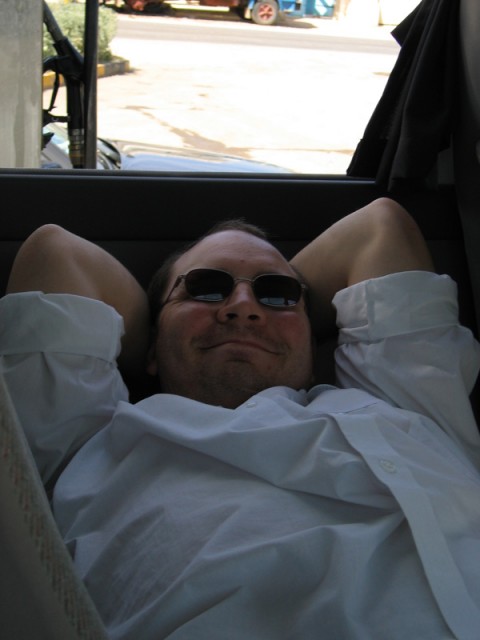The ruin of Dougga is very compact for a Roman city. Previous ruins that I’ve visited in Morocco, such as Vilubulus, were much larger and more spread out. From previous reading I’ve done on Dougga, I believe that the parts of the city unearthed in modern times don’t show the true extents of the settlement. Maybe this was due to a lack of wealth to build the stone buildings which withstand the test of time or maybe it was due to a lack of materials, although I doubt this with the prevalence of rocky outcroppings of limestone and dolomite in the area. The portions of Dougga that do remain tell the tale of a once vibrant community in the heart of what some have called the bread basket of the Roman Empire.
Calling Tunisia the bread basket of Rome brings with it quite a debate among archeologists. Reading on the subject I’ve done in the past shows there’s a great conflict between those who believe that Tunisia truly used to be a fruitful place and those who believe that any surplus of grain taken from Tunisia was actually at the expense of the Tunisians, leaving some to surely starve. From the materials I’ve seen on the subject, I tend to believe that Tunisia truly was once a very productive place that could feed an entire empire. Due to erosion, desertification, climate change, and constant use of the land over time, the Tunisia of today is much less fruitful than when it was in Roman hands. One article said that estimates range from 15-60% of the production capacity of wheat and other staple grains has been lost since Roman times. Couple that with an increased population and one can see how a country can go from surplus to near-deficit in short order.
The theater at Dougga is a typical Roman design including roof supports embedded in the stone floor. Originally, the entire theater would have been covered by a wooden and cloth roof providing a warm dry place in the winter and a cool dry place in the summer to relax and watch some good Roman drama. I couldn’t locate the places in the rear wall where beams would have rested, but I believe this was due to decay of the top sections of the wall over time. The theater itself was preserved so well, most likely, due to the collapse of the roof and, later, the area being covered with soil and plant matter.
Walking further into the site, the Forum and Capitol was the most striking structure, reminiscent of the structures serving the same purpose in Vilubulus in Morocco and in Rome itself. Evidence of recent disturbance of the Forum is obvious form the scaffolding holding up one section of the building. The walls also have large iron bolts and rods running diagonally to brace the building against a large gust of wind or an exceptionally heavy tourist who needs a place to lean against.
This was the first site that I’ve see with a Gymnasium so well intact. After some initial confusion due to my sunglasses, I successfully navigated the tunnels leading to the Gymnasium complex. It was fun to imagine myself in the steam room during the time of the Roman emperors from Africa. The mosaic work on the floor was also interesting. It was not nearly as complex as many of the mosaics present in rich villas and townhouses, but it was very functional and a typical roman design. Of course, the best mosaics reside in the Bardo Museum. That will be another day!
Farther along the road toward the east, the bath of the Cyclopes awaits. It was so named for the Cyclopes mosaic, now residing in Bardo, and the large one-eyed man who guarded over the site until a British expedition drove him off. Well, at least that’s what Lucas told me. Then again, maybe that was just a dream. Anyway, the site is interesting due to its layout and the clover-leave construction of one of the remaining roof elements. Both Dr. Hamdy and I were captivated for several seconds with the roof. Once an engineer, always an engineer!
I made a side trip away from the main group to arch honoring the first African emperor of Rome. The arch is no longer whole, the middle having fallen, but it is still an impressive structure that commemorates the once powerful African district of Rome.
The true highlight of the visit was the latrines next to the Cyclopes baths. We got several pictures of part of the group lounging on the multi-john. Later, once the group had moved farther on, one of the members of our group had me take some more true-to-life photos of the toilets. I will be interested to see what she decides to do with those photos! In Roman times, it must have been sociable to go to the bathroom in groups so as to talk about the important issues of the day. It gives a new meaning to bullshitting!
Our final stop in Dougga was at the Libyo-Punic monument to several dead guys. The structure is the best preserved at the entire ruins, still standing over fifty feet high with only minimal damage to the decoration at the top of the monument. At the monument, we took some pictures of a boy who was shepherding a flock of sheep and, no doubt, was also packing a sub machine gun under his baseball cap, as he was most likely part of the Dougga security forces. I’d hate to think of what heat those sheep were packing! He probably made about 5-7TD off of our visit – more money than maybe even his father makes in a day! It is important to pay money to the locals at such sites as Dougga. For these sites to be preserved, the local population must recognize that they are a source of income and will only remain that way as long as they remain intact as an archeological site. Looting of artifacts or stealing of structural elements will only serve to degrade the site and make the larger tour buses and groups skip over it in favor of better preserved sites. I hope that our small contribution to that boy will make a difference in the preservation of Dougga.
